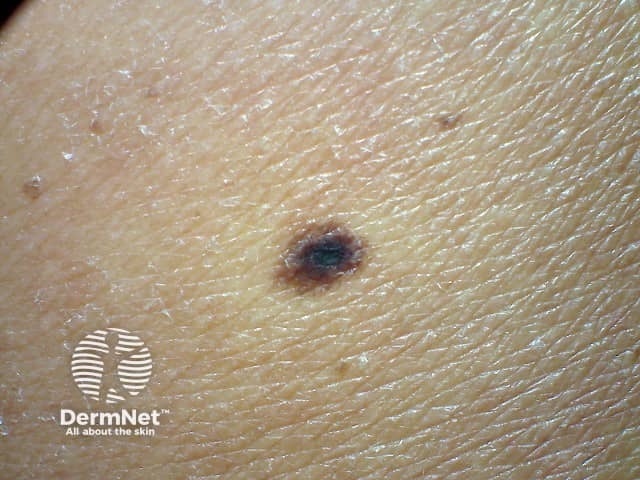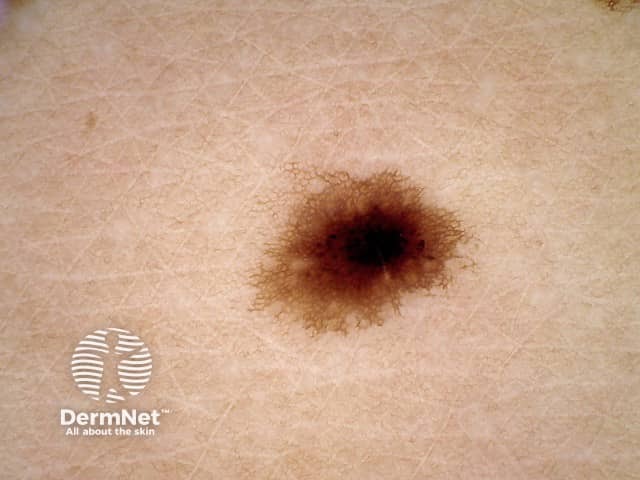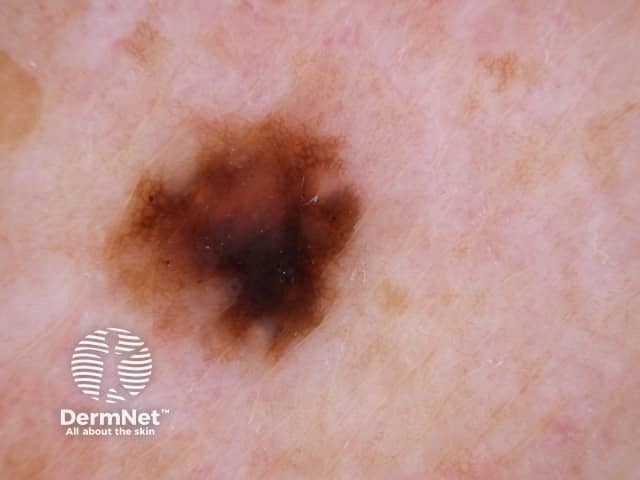Main menu
Common skin conditions

NEWS
Join DermNet PRO
Read more
Quick links
Lentigo simplex — extra information
What is lentigo simplex?
Lentigo simplex is the most common form of lentigo. A single lesion or multiple lesions (lentigines) may be present at birth or more commonly first develop in early childhood. Lentigo simplex is not induced by sun exposure, and it is not associated with any medical diseases or conditions. It is also referred to as simple lentigo and juvenile lentigo.
What are the clinical features of lentigo simplex?
Lentigo simplex lesions may occur anywhere on the skin or mucous membranes. Only a few lesions may develop initially, but over time up until adult life they may become more numerous. Rarely, lesions may erupt suddenly or occur in vast numbers. Lesions appear as:
- Round or oval shaped macule (flat spot or patch) 3-15mm in diameter
- Margin or edge of the macule can be jagged or smooth
- A single even colour ranging from light brown to black
- Lesions are symptomless, i.e.: not painful or itchy
Lentigo simplex lesions are distinguished from freckles by their darker colour, comparative sparseness and scattered distribution. They also do not darken or increase in number on sun exposure, as do freckles.

Lentigo simplex

Lentigo simplex

Lentigo simplex

Lentigo simplex
What causes lentigo simplex?
The cause of lentigo simplex is unknown. Multiple lentigines can occur without associated conditions, in which case the condition is referred to as lentigines profusa or generalised lentigines. When multiple lentigines occur with associated abnormalities, the condition forms its own disease entity. These include Peutz-Jeghers syndrome, Xeroderma pigmentosum, LAMB syndrome, LEOPARD syndrome and Carney's complex.
What treatments are available?
Lentigo simplex lesions are benign (non-cancerous) lesions that cause no harm. However, their appearance is sometimes similar to melanomas or other cancerous lesions so they need to be examined carefully. Also, the presence or development of multiple lentigines may indicate the presence of associated abnormalities. Sometimes these defects may not show up clinically for many years, so a patient with lentigines should be followed up for long periods.
In some patients, the lesions may fade or disappear spontaneously over the course of years. If necessary, lentigines can be removed permanently through the use of chemical peels, cryotherapy, laser treatments or simple surgical excision.
References
- Book: Textbook of Dermatology. Ed Rook A, Wilkinson DS, Ebling FJB, Champion RH, Burton JL. Fourth edition. Blackwell Scientific Publications.
On DermNet
Other websites
- Lentigo — Medscape Reference
